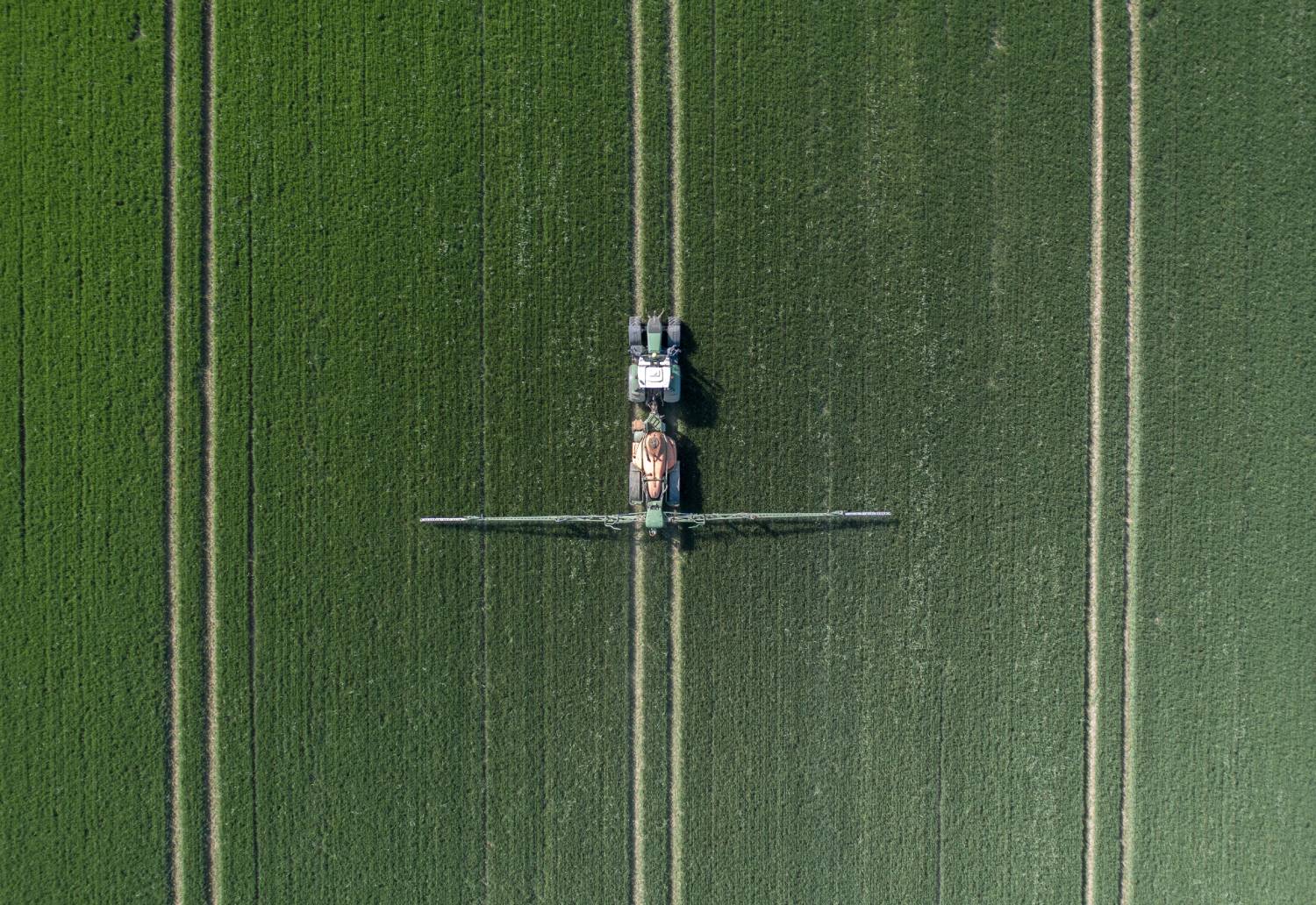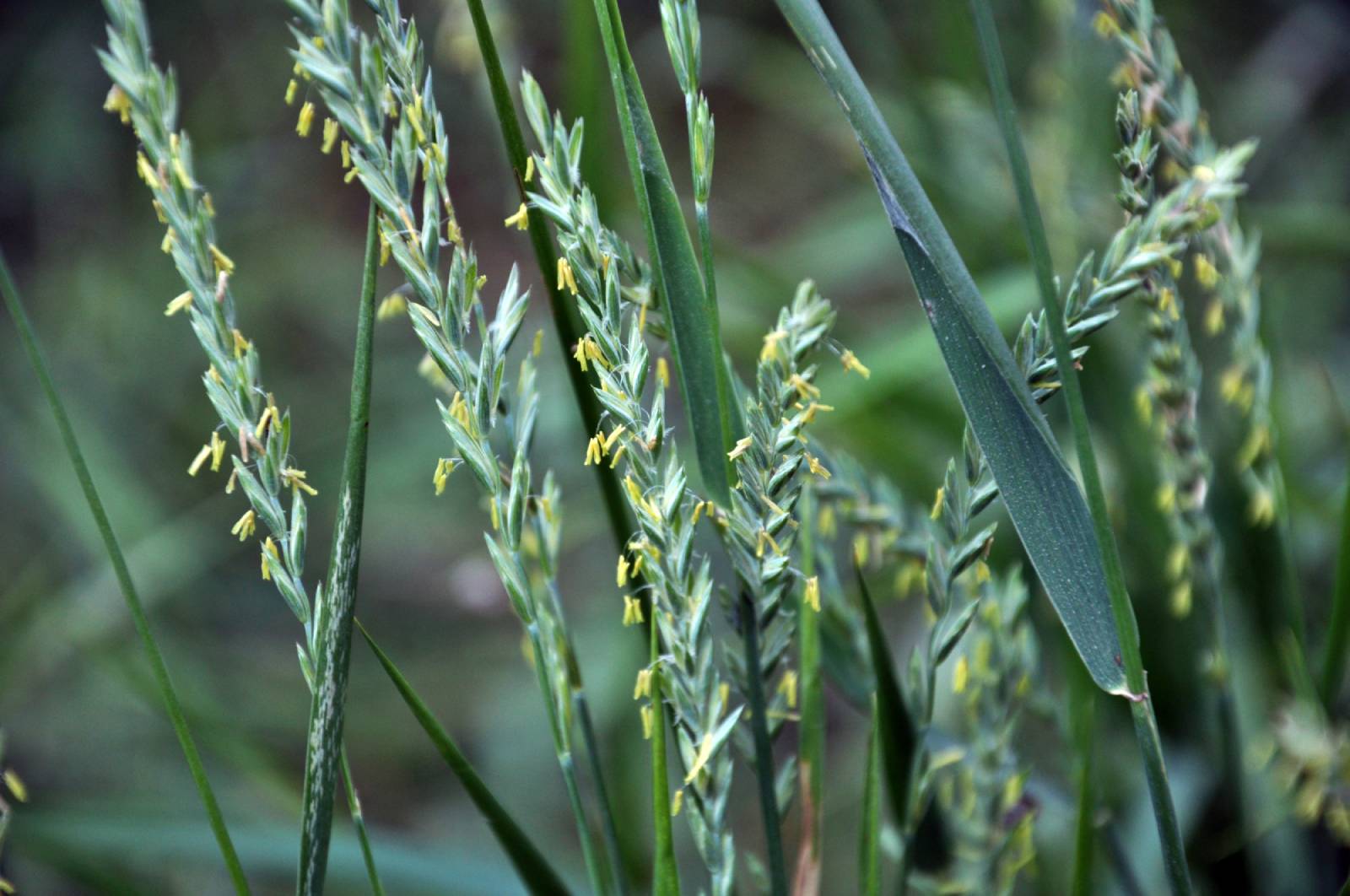The natural substitute for glyphosate

Why are weeds so unpopular in agriculture?
Undesirable plants or “weeds” are considered to be among the pests that cause the greatest losses in agricultural production, accounting for over 30% of the reduction of yields and quality of harvests worldwide.
These crop-choking weeds emerge throughout the whole crop lifecycle and are especially damaging during planting and harvesting, not only because they compete with main crops for resources, such as sunlight, soil nutrients, water, energy, growing space, and carbon dioxide, but they also constitute a natural reservoir, facilitating the attack of numerous pests and disease-causing pathogens.
In response to this problematic pest, over the last 60 years, the agricultural sector has relied almost entirely on the use of chemical herbicides to control weeds, but, the indiscriminate use of synthetic molecules or potential POPs (Persistent Organic Pollutants) has created significant environmental concerns, mainly due to their bioaccumulation and toxicity levels, as well as their role in altering the ecological equilibrium and their direct effects on human health.
Unfortunately, the specificity of the mechanism of action of these synthetic compounds on target crops, has led to the appearance of the feared cross-resistance in the so-called ‘superweeds’, which are one of main emerging threats to agricultural systems.
And so, there’s no doubt that we have an unquestionable and urgent need to:
- Develop natural alternatives with same or higher levels of efficacy than chemical herbicides, paying special attention to glyphosate, and to
- Implement bioherbicides that comply with organic regulations, in response to an increasing interest in food safety on behalf of the consumer.
But, can we pull this off?
“It’s safer than salt” The history of a dangerous “ally”: Glyphosate

While the scientists who developed glyphosate, the most popular weed killer in the world, would perhaps pride on having debunked the old saying “weeds never die”, we can’t help but wonder if they ever considered the question, “at the expense of what?”, when they declared the product to be “safer than salt”
Swiss pharmaceutical chemist Dr. Henri Martin first synthesizes glyphosate (N(-phosphonomethyl)glycine) in 1950, but showing no apparent pharmacological effect, chemical companies are encouraged to search for other possible uses. Later in 1970, Dr. John Franz, a chemist at Monsanto, discovers the compound’s herbicidal properties and in 1974, the world-renown herbicide is patented and marketed under the name Roundup.
From this point on, it becomes the most widely used broad-spectrum (non-selective) systemic herbicide of all time in both agricultural and non-agricultural practices. Its low sale price, its effectiveness as a post-emergence herbicide, and the development in 1996 of the first glyphosate-resistant varieties of soy, corn, and cotton (known as Roundup Ready or “RR” crops) have undoubtedly added to its success. Since the expiration of the patent in 2000, more than 700 glyphosate-based products have been developed and registered worldwide.
Glyphosate has a unique mechanism of action that compromises the plant’s ability to synthesize vital aromatic amino acids by inhibiting the enzyme 5-enolpiruvilshikimato-3-phosphate synthase. This highly specific mode of action, which jumpstarted its fame, has now become key to its own decline.
Also in 1996, the first glyphosate-resistant weed species appear, non-other than one of the most dreaded narrowleaf weeds, Lolium spp. In fact, according to the International Herbicide-Resistant Weed Database, there are currently more than 50 species of plants, dubbed “superweeds,” with documented resistance to glyphosate.
Needless to say, the problems faced by the “Goliath” of herbicides had only just begun, in addition to the continued appearance of glyphosate-resistant weeds, evidence of its bioaccumulation in air and rainwater comes to light in 2011, followed by documentation of its negative impact on bees, aquatic organisms and terrestrial invertebrates in 2014.
In 2016 , the World Health Organization (WHO) and the International Agency for Cancer Research (IARC) issues the first “coup de grace” against glyphosate when it is listed as “probable carcinogenic to humans” and “carcinogenic to humans”, respectively; causing a great deal of controversy within the scientific community and in various state-run bodies, concerning the toxicity and undesirable effects of glyphosate.
In recent years, accusations of scientific fraud (falsification of toxicological data) and false advertising (classifying it as biodegradable and safe) have eclipsed the product’s fame, primarily due to social pressure and business lobbies. The scientific evidence confirming the compound’s adverse effects and carcinogenic properties piles on, having found to cause reproductive system damage, embryo malformations, brain damage, metabolic disorders, acute inhalation toxicity, endocrine disruptions, and lymphomas, to name a few.
In the United States alone, the Monsanto Unit, currently owned by Bayer, faces over 8,000 lawsuits have been filed against the glyphosate-based weed killer.
Simply put, the chemical-based “Goliath” is weakening, and it is time for a natural “David” to take him down.
Where do we stand?
We have been silent bystanders for far too long, watching the agroindustry forsake the natural balance between the environment, health, and agricultural production, in pursuit of a much larger goal: to produce enough food to feed an ever-growing world population.
Since our establishment in 2007, we envisioned a world without pesticides and synthetic hormones, and disregarding those that believed us to be crazy for wanting to change the established norms, we set out to turn our vision into a reality, by betting on a more environmentally friendly and productive agricultural activity, free of residues and toxins. But our goal is not only to supply natural products, we want to deliver natural solutions that are as effective as those of synthetic origin.
Based on this principle, 2019 marks the start of our quest for a natural herbicide formulation with an efficacy equal to or greater than glyphosate-based herbicides. A project which clearly responds to a first-rate social and political demand and that has managed to awaken the interest of public and private entities, receiving funding opportunities from the CDTI and the European Union’s ERDF Funds. In the words of Félix García CEO of Kimitec: “there are huge amounts of synthetic herbicides and soil disinfectants that are still used today because there are no available alternatives. The moment we discover a natural solution, that is as effective as glyphosate, but without the harmful effects, change will come naturally.”
What makes our biotech company unique?
The adoption and implementation of a unique research model for the development of our bioproducts, not only distinguishes us from other chemical and biotech companies, is it also the basis of our success. Our research model, based on the “Lean Research Process” (LRP), enables us to cross-reference information gathered from field experts with our R&D&I know-how, intellectual property, and regulation aspects, giving us a broader understanding of real market needs.
Another distinguishing aspect is the distinct adaptation of the pharmaceutical method to the study of natural products under our 4Health Technology Platform. This technology platform is based on a combination of bioactive molecules obtained from four major natural sources: botany, microbiology, microalgae, and green chemistry, enriching our products with a broad range of bioactive metabolites, enabling our products to have a variety of mechanisms of action. This multifunctionality will make a difference to the new generation of products, especially our biopesticides.
What makes our bioherbicide different from glyphosate?
Our unique research model and our technology are undoubtedly the two main aspects that will make our herbicide different, the only similarity we want to share with glyphosate is its level of efficacy, however, we would like to highlight four differentiating factors:
1. Persistence, biodegradation, residuality and bioaccumulation.
Glyphosate and its main degradation product AMPA (aminomethylphosphonic acid) have a high persistence in the soil, rain, surface and underground waters, and plant tissues, which favors their bioaccumulation and converts them into potential POPs (Persistent Organic Pollutants).
To avoid leaving residues and minimize the risk of bioaccumulation, our bioherbicide will be formulated with naturally occurring molecules, for which nature has developed efficient biodegradation mechanisms, after thousands of years of coevolution. When selecting these molecules, the secondary metabolites derived and/or related to allelopathic interaction processes between the plants themselves, known as allelochemicals, will be taken into account.
2. Mechanism of Action (MoA)
Glyphosate is a molecule that has a unique MoA in inhibiting a key enzyme in plant amino acid synthesis (sole site of action on the target). This specificity in MoA favors the appearance of resistance.
Our bioherbicide will be far more complex, in terms of composition, containing a mixture of different molecules sourced through our 4 natural areas. The synergistic combination of these molecules will guarantee a multifunctionality with than one MoA in target plants, thus minimizing the risk resistance.
Our goal is to influence not only in seed germination and development processes (pre-emergent activity), but also on plant membrane and cuticle integrity, and on basic processes of photosynthesis and pigment synthesis (post-emergent effect).
3. Compatibility and unwanted interactions
The increasing emergence of resistance has led to the use of more powerful herbicidal mixtures by combining glyphosate with other active substances and or specific adjuvants. This has caused an increase in residuality and bioaccumulation, as well as the generation of new molecules with a greater toxicological impact. Our bioherbicide will have several mechanisms of action that will prevent the appearance of resistance and, therefore, the need to apply other active substances.
4. Added value
Our bioherbicide can be used in both conventional and organic farming systems.
Where are we in terms of product development?
In line with our LRP, we have identified the market needs and the main agronomic aspects, in collaboration with crop advisors and field experts, in countries previously defined by our “Business Intelligence” team. The main representative weed species affecting extensive and specialty crops, some with demonstrated resistance to glyphosate, have been identified and gathered to be used as models in the screening phase. These include narrow and broad-leaved monocotyledons and dicotyledons such as Amaranthus spp., Conyza spp., Echinochloa spp., Alopercus spp., Cyperus spp., Chenopodium spp., Solanum spp. and Kochya spp.
We are currently in a very advanced phase of identifying candidates from the 4 natural areas, as well as optimizing the obtention process of bioactive molecules (fermentation, extraction, fractionation, cell cultures, etc.).
We have started on the HIT to LEAD (H2L) screening phase against the different target weeds. To accomplish this, we have designed and adapted different in vitro and in vivo trials, allowing us to identify different mechanisms of action. So far, a total of 10 HITS have been identified with promising levels of efficacy against the positive control (glyphosate), and currently in the secondary screening phase for their potential selection as leads or as synergistic components.
This project is financed by CDTI, where we participate in collaboration with companies of great relevance in the olive sector (De Prado) and the fresh fruit and juice sector (Grupo AMC). This collaboration will allow us to have new candidates derived from their production processes (co-products and by-products). In addition, De Prado has experience in the extensive application of herbicide, which will give us additional support in our future field validation trials.
